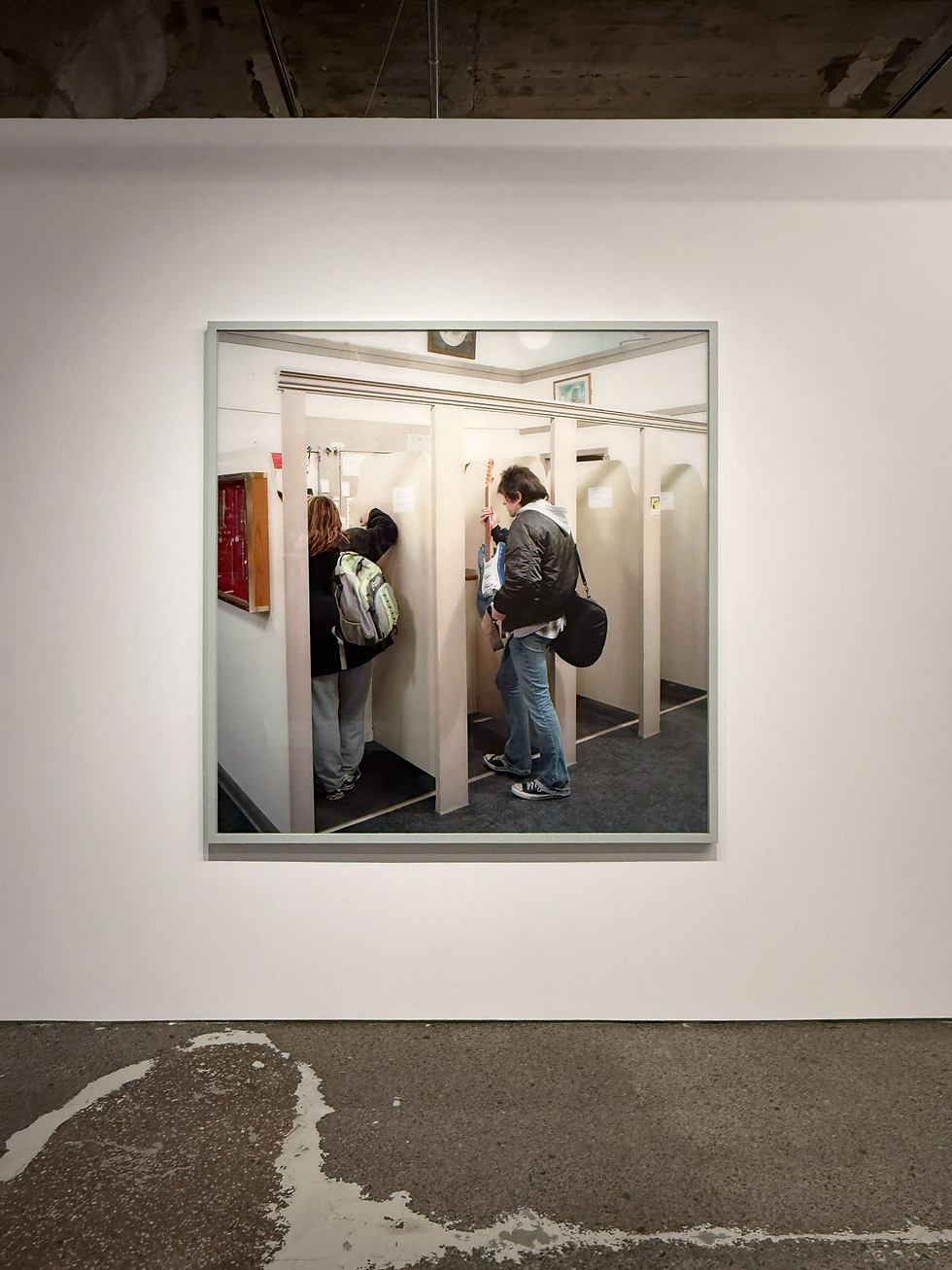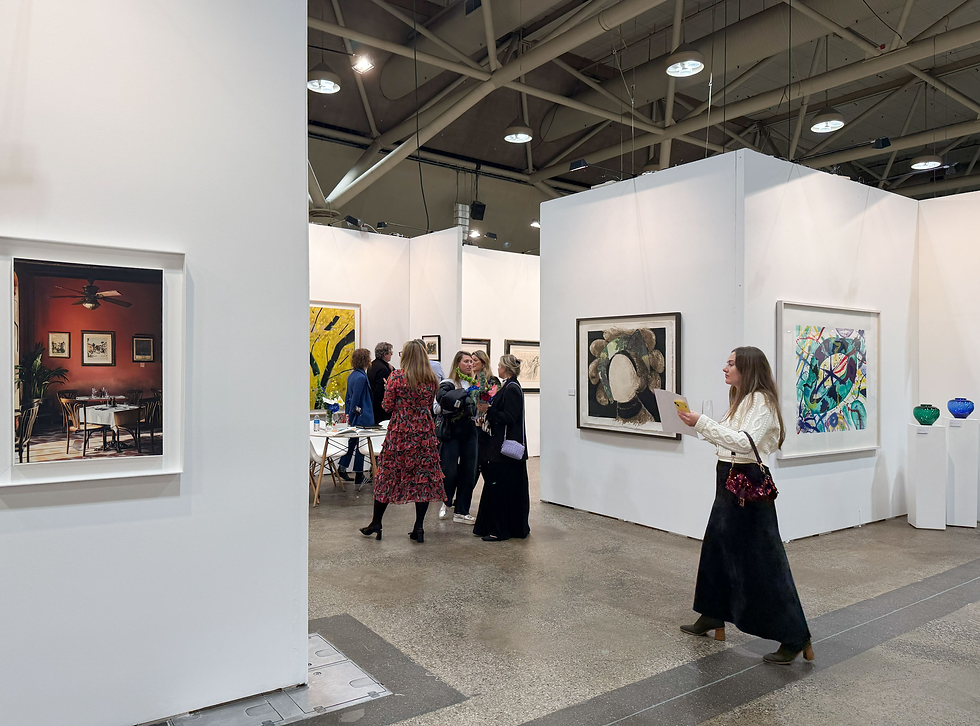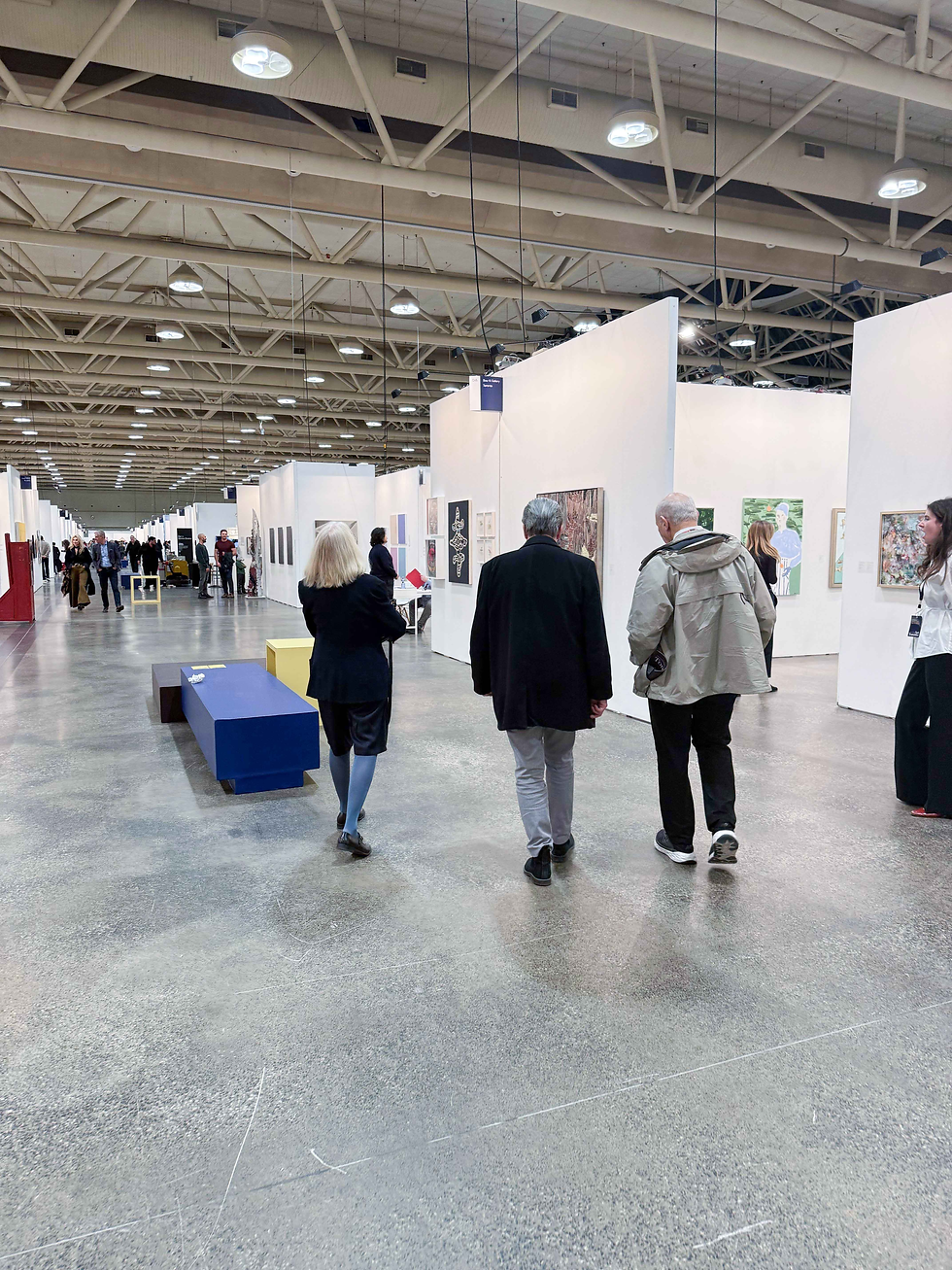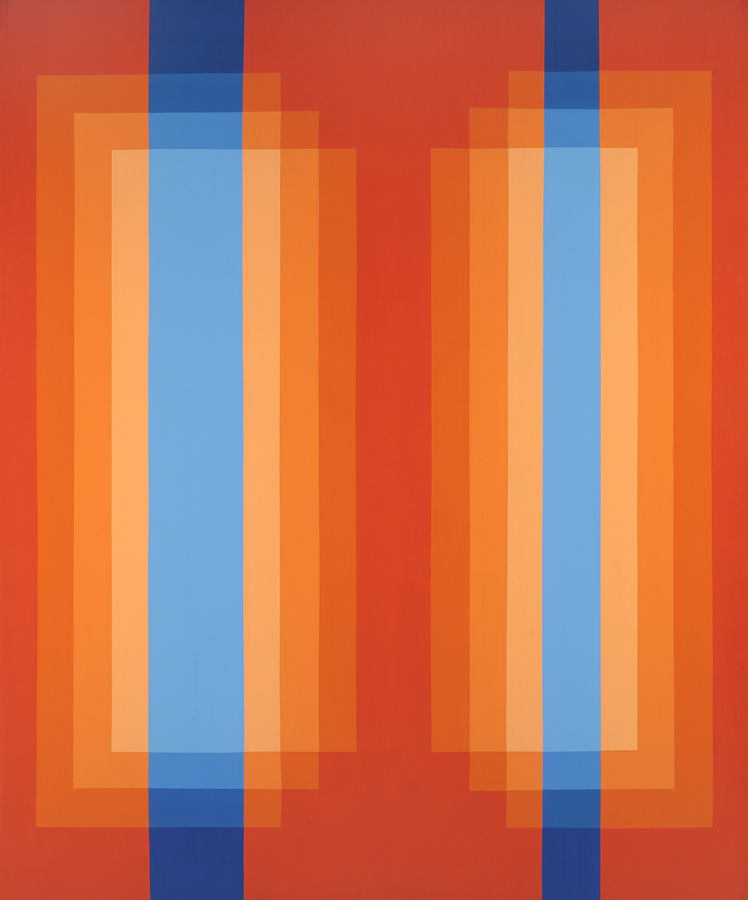Our Week in Toronto
- Diamond Zhou

- 6 days ago
- 7 min read
welcome to our
SATURDAY EVENING POST
October 25th, 2025
This week, we are in Toronto for the art fair. Not having to mind a booth of our own this time is giving us the pleasure to be here alongside friends and colleagues. In many ways, stepping back from the exhibition floor has given us an unexpected gift, the chance to spend time with people we rarely get to see and whom we have missed dearly. Between going through the fair, we found time for a few special experiences beyond the aisles and blinding lights. We’re delighted to share some of those moments with you here.
The exhibition Jeff Wall: Photographs 1984 – 2023 at Museum of Contemporary Art Toronto (MOCA Toronto) presents a sweeping survey of one of Canada’s most consequential living artists, his first major Canadian solo in over 25 years and his first in Toronto in 35. Spanning all three floors of the museum, the exhibition covers more than 50 works, including large-scale light-boxes, black-and-white and colour prints, tracing Wall’s trajectory from late-40-year-old near-documentary photographs to ambitious staged tableaux that blur fiction and reality. The show opens on Floor 1 with Children (1988), a striking group of circular portraits that elevate children into heroic poses, while the upper floors explore recurring themes of everyday life, margins of society, and the quietly monumental in his images of the contemporary world.



The Jeff Wall exhibition at MOCA is genuinely rewarding, not only for the power and precision of the works themselves, but for what it represents within the Canadian cultural landscape. It is rare to see such a major, career-spanning body of work by a Canadian artist of truly international stature on home soil, and for me, it was the first time I could see in person so many photographs I had previously known only through books and online reproductions.
The experience of standing before the large-scale light boxes, radiant, cinematic, and impossibly exacting, and in contrast with the monumental silver gelatin prints, whose quiet intensity and technical rigour reveal themselves slowly, was breathtaking. The sheer meticulousness of Wall’s execution, paired with an exhibition so impeccably curated that each work seems to speak to the next, made the show feel alive, the images were truly given an opportunity to converse and build upon one another across the galleries.
It shows how vital it is for Canadian institutions to champion our own artists with seriousness and ambition, and MOCA has done so brilliantly here, offering a profound reminder that Canadian audiences deserve to experience the best of Canadian art, not at a distance, but directly, viscerally, and in full scale.













We were introduced to Harry Malcolmson through Roald Nasgaard, and soon had the great pleasure of meeting Harry and his lovely wife, Ann Malcolmson. Harry’s recent book, Scene: How the 1960s Transformed Canadian Art (2025), offers a vivid account of how Canadian art shifted during that decade from regional modesty to international ambition. He writes with the insight of someone who not only lived through the era, but helped shape its conversations.
He and Ann are themselves are not only seasoned cultural figures in Canada but also passionate and pioneering photography collectors who began acquiring works seriously in 1989. Over the decades they formed one of the most significant private photography collections in the country, comprising 279 works by 110 artists spanning from the 1840s to the present. In 2013, they gifted this remarkable collection to the Art Gallery of Ontario, which became one of Canada’s most significant photography holdings.
We had the good fortunes of spending some lovely time with them, gathered around a pot of strong tea, sharing stories about their history, their collection, and our mutual circles of friends and artists. Their apartment is tastefully composed, overlooking a soft autumn view. The photographs on the walls are tenderly chosen and speak quietly about who they are: intelligent, gracious, and deeply attuned to the emotional life of images.
As the sun began to set, the room was momentarily transformed. A warm, amber light poured through the big window and washed across the walls, briefly illuminating every silvered surface with a gentle radiance. For an instant the space felt suspended, bright, calm, and beautifully still, before the clouds drew in, the light dissolved, and evening settled around us.
It was only later in the conversation that we learned of their ingenious solution for protecting the very works that surrounded us: on brighter days, Ann and Harry have devised a covering system for each photograph, allowing them to live with the art they love while shielding it from the slow violence of sunlight. It struck me as a perfect metaphor for their relationship to art, attentive, caring, forward-looking, ensuring these images will outlast them and remain alive for the next generation of viewers.




The next morning, we had a wonderful visit with Edward Burtynsky, together with his wife and business partner Julia Johnston, and his long-time assistant Karen Machtinger. Burtynsky, one of Canada’s most celebrated contemporary photographers, internationally known for his large-scale images of the human footprint on the land, is, despite his accomplishments, remarkably grounded. He is thoughtful, humble, and deeply committed not only to his work, but to the planet, to the people around him, and to the larger questions that shape our collective future. His devotion to the process of art-making runs through everything he does.
This was not our first time visiting the studio, yet Ed and Julia have a way of making each visit feel fresh yet at home. The studio space carries a warmth that is both creative and human, the kind of place where conversations can unfold naturally, and where everyone who enters feels instantly at ease. We spoke about the work ahead, about the business, and about the possibilities that continue to open in unexpected directions.
We also had the joy of spending time with Barkley, their senior and spirited dog, whose enthusiasm for pastries, affection, and attention knows no limit. He made his rounds between us with determination and charm.
Pictured below are Ed, his long-devoted and brilliant assistant Karen Machtinger, and Paul. (Julia, who is beautiful and radiant in person, proved to be camera-shy.)



We also joined a special tour of the TD Art Collection through Art Toronto. The TD collection, founded in 1963, is one of the most significant corporate art collections in Canada. It now holds more than 6,000 works across more than 1,000 locations in Canada and the United States. The collection began with a focus on contemporary Canadian artists and Inuit art, and has since grown to embrace diverse voices, new media and socially engaged practices, reflecting a serious investment in the cultural life of the country. Walking through the collection, it became clear how meaningful it is when a corporate collection grows with intention and care. By placing art in workspaces, it quietly supports artists, exposes broad audiences to visual culture, and integrates art into daily life, making it accessible, rather than confining it to museums and galleries alone.
The view from the upper floors, where the offices look out across the Toronto skyline is expansive. The city opens in every direction, and for a moment the artworks and the view speak to one another. It felt impressive not only for the height, but for the reminder that art can shape how people see and experience the world around them.







At one point I turned around and found Paul deep in conversation with the Glenn Gould statue outside the CBC building, as though the great pianist were offering him secret insights about Bach, art, and life. Gould has long been one of Paul’s cultural heroes, especially for his legendary interpretations of Bach’s Goldberg Variations, which remain some of the most celebrated piano recordings of the twentieth century. Perhaps this is why the two seemed to get along so well. Gould, after all, was a genius, an eccentric, and a man who preferred the company of ideas and music over the noise of the crowd, and Paul, for his part, looked delighted to be in such quiet company. The scene was ridiculous and oddly touching, there they were like two old friends reunited after years apart.



Finally here is our adventure through the Toronto Art Fair.




















The unfortunate reality is that last year’s “acclaimed” hydrant box installation was never collected by its buyer, for the simple reason that it cannot be moved. Permanently affixed to the convention centre, the work remains exactly where it has always been. Last year, when our booth opened directly onto this oversized red intruder, we had a choice to make. Slightly annoyed, and with no power to change its position, we chose to elevate it. We gave it a title, a “medium”, and a full didactic text, and in doing so the hydrant became “art”, a fond memorable moment that still makes us smile.
But humour aside, there was something quietly revealing in this little episode. The hydrant reminded us that art is not always born from ideal circumstances. Sometimes life places an immovable and impoverished object in front of us, and we are asked to decide what to make of it. By choosing to transform an inconvenience into a moment of beauty, we rediscovered a simple truth: when attention, imagination, and generosity meet even the most mundane object, something shifts. The world becomes a touch more interesting, more human, more alive.
This year, as we pass by the hydrant once more we are reminded that beauty and utility, frustration and play, can coexist. Perhaps that is part of the human condition: we do not always get to choose the objects in our path, but we can choose the meaning we make from them, and occasionally, if we’re lucky, we can make them sing.


Today marks the birthday of Pablo Picasso, born October 25, 1881. It is astonishing to reflect on how one artist could alter the course of modern art with such force and velocity. Picasso never stopped reinventing his language, refusing comfort, repetition, or rest. Whether one loves him, questions him, or wrestles with his legacy, his impact is undeniable.

CURRENT
GROUP EXHIBITION


CONTACT US
4-258 East 1st Ave,
Vancouver, BC (Second Floor)
GALLERY HOURS
Tuesday - Saturday,
11:30 AM - 5:30 PM
or by appointment
我们提供中文服务,让我们带您走入艺术的世界。


